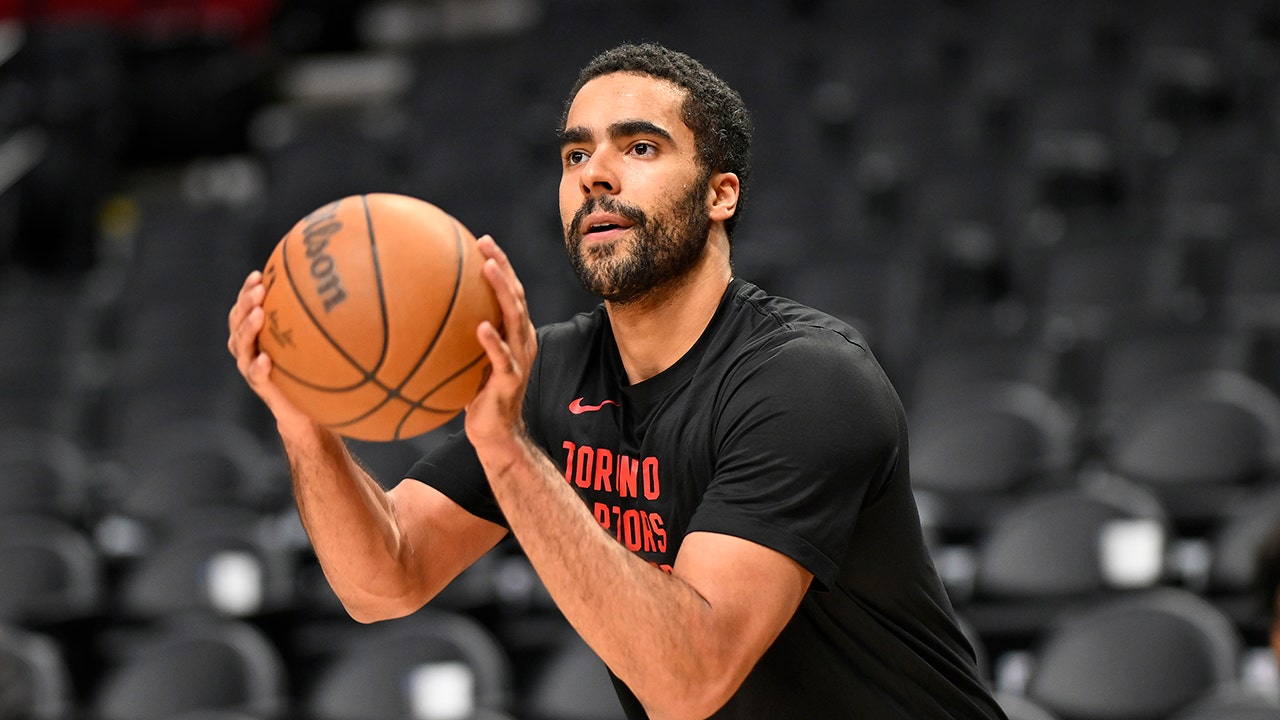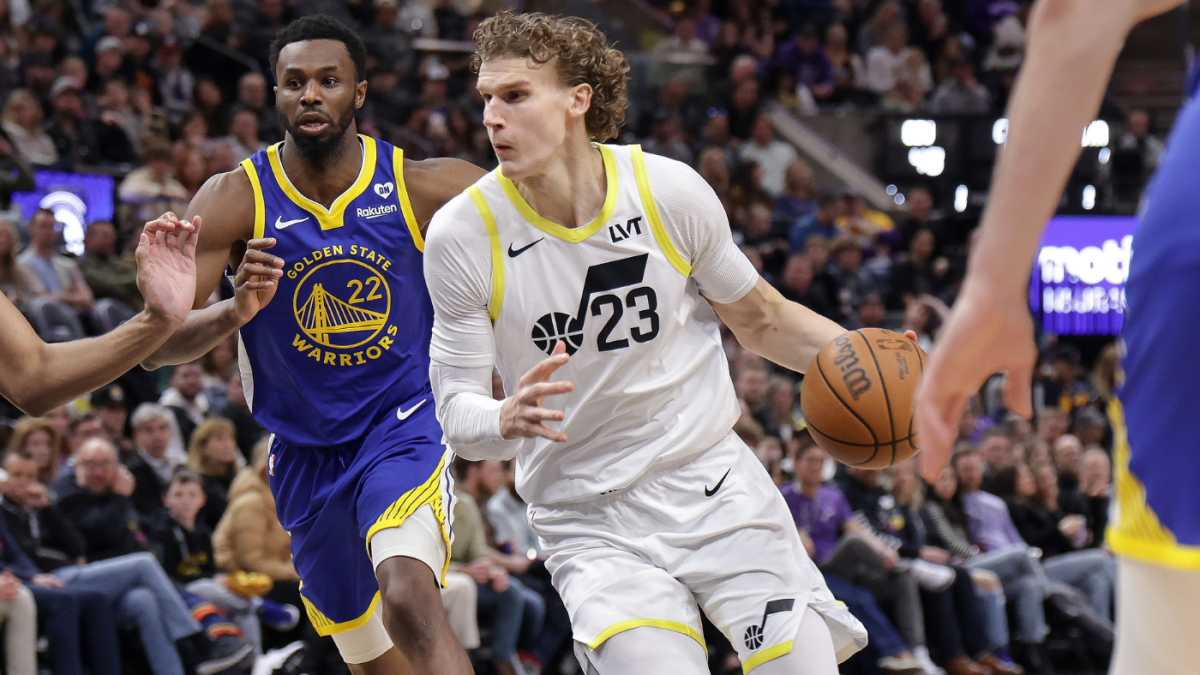Fitness
The Biggest Brain in Fitness Just Made Your New Favorite Podcast

WHEN I LOOK at social media, I am inundated with fitness information, hot-takes, scientific findings, and bro-science musings. It’s exhausting. While we are knees-over-toes deep in the era of content overload, there is a new free source for applicable, science-backed information: a new 10-part podcast series called Perform, which will give you the tools to level up your cardio, fine-tune your fitness goals, and increase your brain-gains. Perform is hosted by Andy Galpin, C.S.C.S. D.*, a professor of kinesiology at California State University, Fullerton and one of the most respected minds in fitness. The show debuted June 12th and will serve listeners new episodes every Monday.
Galpin is a human performance scientist with a Ph.D. in human bioenergetics and is co-director of the Center for Sport Performance and founder/director of the Biochemistry and Molecular Exercise Physiology Laboratory at Cal State, Fullerton. He has worked with top athletes in every conceivable field, from Olympians to Cy Young Award-winners to highly-decorated UFC fighters through his company Rapid Health Optimization, which uses proprietary bloodwork to develop customized programs. Now those services are also available for civilians through a new company called Vitality Blueprint, starting at $1,250 for a blood test with 100 markers and six months of training programming.
Although MH first covered Galpin’s innovative research on muscle plasticity in 2019, most people probably know Galpin—or least his voice—from the super popular six-part special he did with Andrew Huberman, Ph.D. on the Huberman Lab podcast. The team that produce Huberman Lab recruited Galpin for Perform. “Dr. Andy Galpin represents that rare and incredibly valuable combination of world-class researcher and educator who also can distill his knowledge into clear practical steps that anyone, regardless of fitness level or aspiration, can greatly benefit from,” Huberman shared via email.
I wanted to learn what he’ll be talking about on Perform—and also explore where fitness will be in 10 years. I caught up with Galpin to learn more.
MEN’S HEALTH: What’s the purpose of the podcast?
ANDY GALPIN: So a handful of things. One, I’ve been really wanting for years to get back to doing more of the physiology videos I did on YouTube and I always wanted to do an audio version of those as well for people to make it easier. Then I did the series with Andrew Huberman and it was super popular and we realized there was an audience.
With Perform, the idea is to not confuse or conflate perform with sports, but instead with performance meaning we want everyone to always look, feel, and perform at their highest mentally, physically, emotionally, and cognitively, however, they define that. So, the context is you set the rules, what do you want to perform in? You want to be a better weightlifter? Great. You want to be a better leader, parent, neighbor? It doesn’t matter, right? So performance at your absolute best, physically and mentally, is number one. We want to do that across multiple domains. Sport, play, life, business. We will spend almost no time on disease.
How are we going from good to great to elite—and wherever you’re at on those spectrums. The reason we wanted to start that with just me for 10 episodes is so to make sure we can do really high-quality shows. The world does not need another weekly podcast.
MH: A podcast is like a sitcom and you’re like a limited series. The Perform podcast features 10 episodes starting with basic stuff like heart and muscle, and progressing to strength, hypertrophy, VO2 max, sleep, and finishing up with lactate, genetic testing, and bloodwork for performance. On Huberman Lab you went deep on DIY strength tests and that really resonated with listeners. Are any pieces of that bleeding into what you’re doing with Perform or is this completely new?
AG: It’s new stuff, but it’s a natural extension of all my work. I asked: If we can do that better, what would it be? So every episode has what I call the three Is. We’re going to cover how to investigate: How you measure and assess what you look for, whether we’re talking about sleep, strength training, what ever. What do I measure? What should my numbers be? So how do you investigate it?
Number two, how do I interpret that? And so what we really try to do hard is give people tons of context on what do these numbers mean for you? What is good, bad, great, elite, what are the world records in this area? How do you really interpret these numbers, not from just a medical perspective?
And then three, how do I intervene?
So it’s investigate, interpret, and intervene. What’s the training? What’s the nutrition? What’s the recovery? If I care about this thing, how do I even assess myself?
Within that assessment piece, we almost always cover zero to 100 in the sense that, you know, what is the push-up version of this test that everyone can do kind of without equipment? What’s the middle-of-the-road one? Then, if I had unlimited funds, what are the best in the world, the most advanced technologies doing with these things? I want people to see what happens behind the scenes on some of these unlimited-budget things.
MH: How do you bridge the gap for people when it comes to that? Are there pieces in place to help people get a better view of how they can begin to optimize?
AG: I feel like I’ve done a good job historically of trying to make sure that people are doing the basics and to not be oversold and overhyped on things. My hope is within each episode that there’s so much context and layering and so many warnings, if you will, that hopefully that comes through.
This episode, covering how to strengthen your heart and cardiovascular fitness, shot me back in time to Rutgers University, sitting through my exercise science classes (in a great way). Galpin does a crafty job of breaking down collegiate level information for the fitness enthusiast on their commute to work using his “three I” structure.
First, investigate. Galpin tackles how the heart is constructed and its vital function in the body, and also explored the more brain-teasing stuff like why doesn’t your heart get sore and how does cardiac muscle differ from other forms of muscle in the body?
Next, interpret. After getting familiar with the many ways to track your hearts efficiency and providing performance context around impressive VO2max scores (spoiler alert, the world record is near 100), Galpin details methods for at-home testing. You can do a step-up test and plug your data into an online formula or do a 12-minute maximum effort run and plug your total distance into an online calculator (along with age). While Galpin notes these are sub-max protocols, as in they’re not clinically accurate, they do at least provide some insight and are free.
Lastly, intervene. There is good advice to use a variety of modalities, whether you run, ride, swim, row, circuit train, take kettlebell classes, and to try to exercise at a range of easy, moderate, and high intensity.
Galpin doesn’t tell you exactly what to do, unlike some podcasters, but he explains the benefits of each intensity. For instance, he says, “Spend a good amount of time at a lower intensity because that drives metabolic efficiency and is the best way to burn fat and is easy to recover from. Higher intensities are more time-efficient, but do challenge your whole system and are more stressful.” His conclusion is deceptively simple: You need to modify your cardio training based on what’s sustainable in your lifestyle and goals. I also found Andrew Huberman’s post on the show really helpful. It summed up Galpin’s take clearly:
- do 70% of your aerobic work at low intensity (60-82% of max heart rate)
- 20-25% of aerobic work at moderate intensity (82-90% of max heart rate)
- 3-6% of aerobic work at high intensity (92%+ of max heart rate)
This can be within workouts or across sessions.
Overall, the episode is super informative, and packed with interesting details that help you understand heart health and fitness why it matters.
– MH Fitness Advisor David Otey, C.S.C.S.
MH: The fitness world is changing fast. What are some of the things that you think will have a great impact in the next 10 years ?
AG: Man, there’s a lot to say about that. We recently completed a project called The Human Digital Twin. This was actually a conglomeration of probably a dozen companies that came together and we were able to make a digital replica of functioning physiology. Not just movement patterns or body size, but everything from blood work, to synapse firing rate, to digestion, like the whole thing. Then we can run experiments on that—and did endlessly—to predict outcomes and then put people actually through interventions to prove it works.
Think, how your blood may respond to varying environmental changes or medical interventions may vary your physiological responses. I’ve always been very anti-technology for the most part in this area. I thought A.I. was generally useless. There’s a huge concern with Chat GPT and A.I. for fitness right now. I think it’s probably causing more harm than good for the most part.
But I’m actually now to the point where like, okay, I can see how this is going to help people. It’s not there yet, but with a 10- to 15-year window, I one-hundred percent think things like personalized nutrition will actually become real.
The interesting part is really going to come on line with getting your physiology that I can give you a hundred examples, but one is nutrition and people think it’s hard and say ‘I just don’t know what’s working for me.’ Soon we’ll have the ability to get hundreds, if not thousands of blood markers from tiny samples and really start to figure things out, figure out what works on a personalized level.
MH: The nutrition part is such an interesting aspect because there is so much back-and-forth on how everything applies to each individual. Can you dive deeper into that?
AG: Totally! You will be able to get things that matter even for the average person because that cost will come screeching down and that will give people rough bumpers. You still have the overwhelming majority of people who don’t even have any comprehensive understanding of what they’re eating, exactly which micronutrients, every day.. I think there will be ways to get this information 100 percent in a way that doesn’t involve a single drop of blood.
The big question is how do people actually solve the problem of figuring out what works for their unique physiology? As it currently stands, that process is ultra resource and time expensive. You need to run a barrage of tests, have those data properly contextualized by a specialized expert, and then run more tests. It’s what we do for our elite athletes and executives, but it takes months and is highly expensive. However, these costs are coming down dramatically. One example, our comprehensive blood analysis program is now available for $1,500 and the backend technology can analyze, interpret, and allow you to create high precision solutions for individuals. While $1,500 is still a ton of money, it’s far cheaper than what it used to be and it will continue to decrease dramatically in the coming years.
Some of the technologies that are coming with cameras, like, blood biomarkers via cameras are going to be insane. I’ve already seen a bunch of them. So it’s things like that where now these things start to matter. Now we can actually start running studies and collecting data on. I’ll say it this way. I think the solution to the entire exercise science field is going to be here in a decade. So not only for the individual person, but from a scientific perspective, we’re going to be able to run studies in ways that are completely foreign to the exercise science field.
MH: Fitness programming and nutritional intervention would be exact at that point! We would know everything we need to know about our bodies and how they operate. This is getting me fired up! I see this most often with my own clients when it comes to exercise and nutrition intervention—most people want to know what your professional take is and just run with that, right?
AG: Exactly. I don’t need, “try this supplement for six weeks and see if it actually works for you or not.” Well, are you controlling every other variable for that six weeks? No, you’re not. Some people end up never knowing, right? You’re just like, I don’t know. I couldn’t really tell. Well, I tried it, but I’m not really sure it worked. Are they accounting for stress in your job? Being able to account for these things is going to make a huge impact.
One of the biggest problems in human health and performance research is the enormous cost to get high-quality information on a single participant. Because of this, most research is restricted to using very small samples sizes (often times 6-15 people) with very similar traits (age, weight, exercise habits, lifestyles, geographical location, sex, etc.). Which means the results may only apply to people of similar traits. However, with new technology, these costs can be cut by 100x, meaning the feasibility of running really big studies explodes almost overnight. This means we dramatically reduce the likelihood of false findings or findings that only apply to a super specific population. Ultimately, this translates into more accurate analysis and therefore more effective recommendations, treatments, and solutions for people of all demographics.
It’s going to be an exponential explosion of the camera technology I mentioned earlier. Blood technology, sleep technology, we’re going to have every metric for these things are super fast and we’re going to be able to really answer questions at large scale, which is going to actually let us know more about physiology. The idea of personalized physiology is definitely going to be real.










